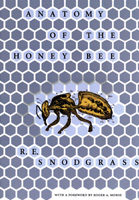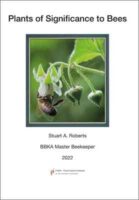
click image to zoom
This book was written as reference material to aid in the study of the National Diploma in Beekeeping (NDB). This is why the backbone of the book is the NDB plant list. However, for the NDB there is an expectation that the candidate will demonstrate knowledge beyond that of the plant list. So there are additional plant families and individual…
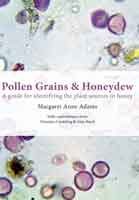
click image to zoom
This book describes, in detail, a simple approach for beekeepers, to identify the plant sources of their own honey. They will occasionally find they have a special honey, and then the jars can be labelled accordingly. From 2019 to 2021, beekeepers from The UK and Continental Europe sent me samples of their honey, and the collection of digital photos from…
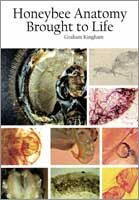
click image to zoom
This book uses photo essays to set out and display the anatomy, internal, external of the honeybee with over 350 detailed micrographs, together with slide images and drawings. Pests and other additional hive activities are also included. It will appeal to anyone interested in this fascinating insect and be particularly valuable to beekeepers studying for their British Beekeepers Association Module…
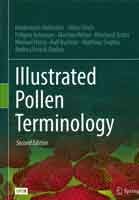
click image to zoom
This book offers a fully illustrated compendium of glossary terms and basic principles in the field of palynology, making it an indispensable tool for all palynologists. It is a revised and extended edition of "Pollen Terminology. An illustrated handbook,’” published in 2009. This second edition, titled "Illustrated Pollen Terminology" shares additional insights into new and stunning aspects of palynology. In…
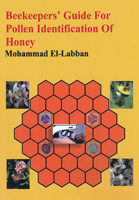
click image to zoom
This is a practical book written in a simple manner to make it understandable for beekeepers while still maintaining the principles and rules of pollen identification in honey. It also contains valuable information for expert melissopalynologists. It is designed after an intensive work in field observation of bee foraging, preparation & photographing pollen of the observed flora, searching in hundreds…
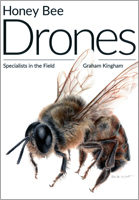
click image to zoom
This book concentrates only on the drone - the male honey bee. It provides details regarding the drone's internal and external anatomy, production and development, behaviour, role in the hive, genetics and more. Copiously illustrated, the book also discusses the latest research updates on drones. Graham Kingham is a retired mechanical quality engineer who keeps a few hives in Devon.…
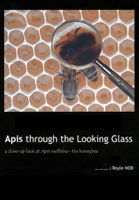
click image to zoom
This book is based on a lecture "Honeybee Anatomy" which was first given at the BBKA Spring Convention 2009 held in Stoneleigh. It provides a close up look at the external and internal structures of the honeybee. The majority of photos were taken using a digital camera mounted on a trinocular dissection microscope. Dissection of the bee to study the…
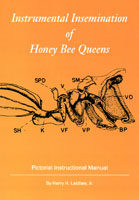
click image to zoom
The classic title for all who are considering this approach.
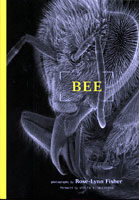
click image to zoom
This is a remarkable and beautifully produced book containing detailed black and white photographs of the external anatomy of the honeybee by Rose-Lynn Fisher, using a scanning electron microscope. As a book of excellent photos it stands on its own and will thrill the owner with its intricate views of insect structure, which cannot be seen with either the naked…
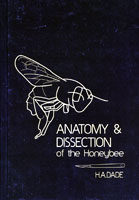
click image to zoom
This is a clear and practical guide to both the anatomy and dissection of the honeybee and is written in a style which makes the subject understandable by those without formal training in zoology or entomology. It is a classic of the beekeeping world.
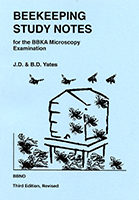
click image to zoom
This is the only single volume that covers all aspects of the syllabus for this examination. This Third Edition published in 2014 has a contents list which is based upon the existing syllabus. As such it is a very necessary text for all those interested in sitting the examination and will also prove helpful for all interested in microscopy.
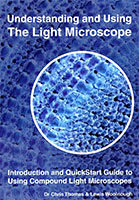
click image to zoom
This book explains the key microscope components and set-up. There are numerous illustrations, photographs and links to nine instructional videos that accompany the book.
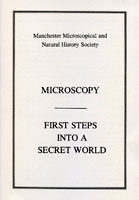
click image to zoom
Microscopy, First Steps into a Secret World is a short guide to the purchase and use of the microscope by the then Hon. Secretary of The Manchester Microscopical & Natural History Society. Recommended for those who intend to make use of a microscope in their beekeeping activities.
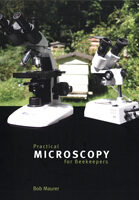
click image to zoom
"Essential reading for any beekeeper exploring the world of microscopy. Clear, concise and practical." - Celia Davis BSc NDB, Author: The Honey Bee Inside Out & The Honey Bee Around and About. "An invaluable step-by-step overview of the microscopy tasks candidates may be required to perform or discuss in the British Beekeepers' Association assessments." John Hendrie - Past Secretary, British…
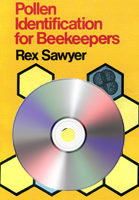
click image to zoom
Rex Sawyer, an authority on pollen has written a most useful manual for those lucky enough to possess a microscope. Awarded a Bronze Medal at the Apimondia 1983 Budapest Conference. This includes the CD - an illustrated key to accompany Rex Sawyer’s book.
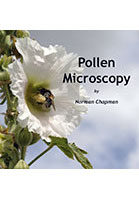
click image to zoom
Pollen is fascinating material for anyone interested in looking down a microscope, or discovering where their bees have been foraging. The variety of sizes and shapes gives clues as to the ingenious ways plants utilise the weather and insect behaviour to deliver pollen to its intended destination. This second edition of the book shares techniques on successful microscopy accompanied by…
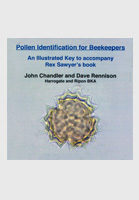
click image to zoom
CD by John Chandler and Dave Rennison (Harrogate and Ripon BKA): An illustrated Key to accompany Rex Sawyer's book. This item is the CD An Illustrated Key (Chandler & Rennison) only.

click image to zoom
This volume was originally published by NBB in 1984. Owen Meyer - a former General Secretary of the BBKA was a popular lecturer throughout the country on simple microscopy. This book resulted from his lecture notes used at these events
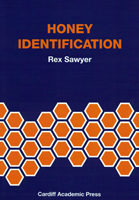
click image to zoom
This is a practical book, designed both for small-scale beekeepers and for those engaged in the honey industry, to explain the principles that can be applied to determine a honey's origin. Such investigations involve the microscopic examination of pollen and other particles in a honey which reveal its nectar sources, honeydew content, and region of production. In view of the…
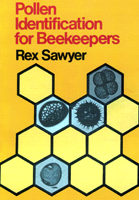
click image to zoom
Rex Sawyer, an authority on pollen has written a most useful manual for those lucky enough to possess a microscope. Awarded a Bronze Medal at the Apimondia 1983 Budapest Conference.



